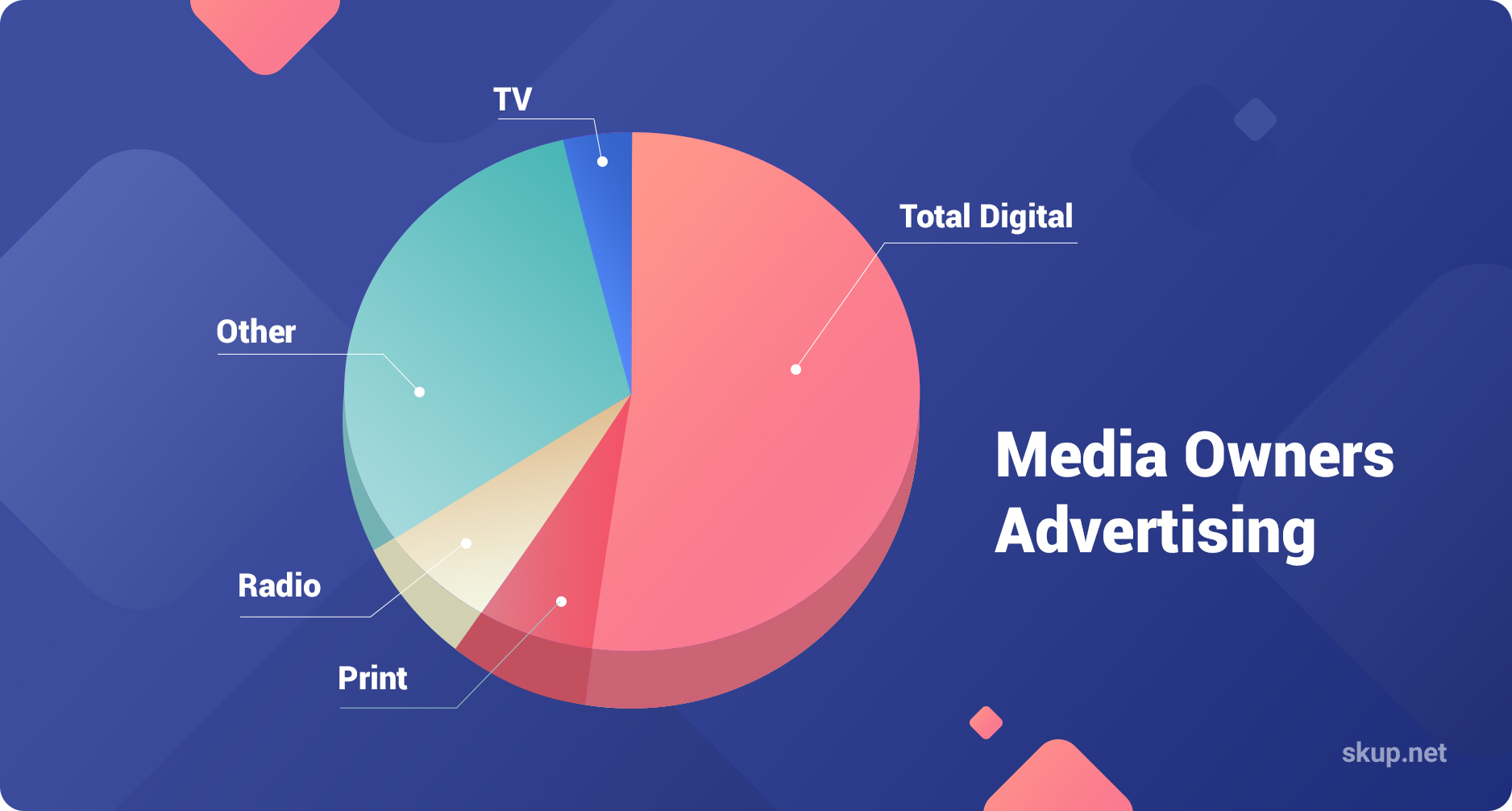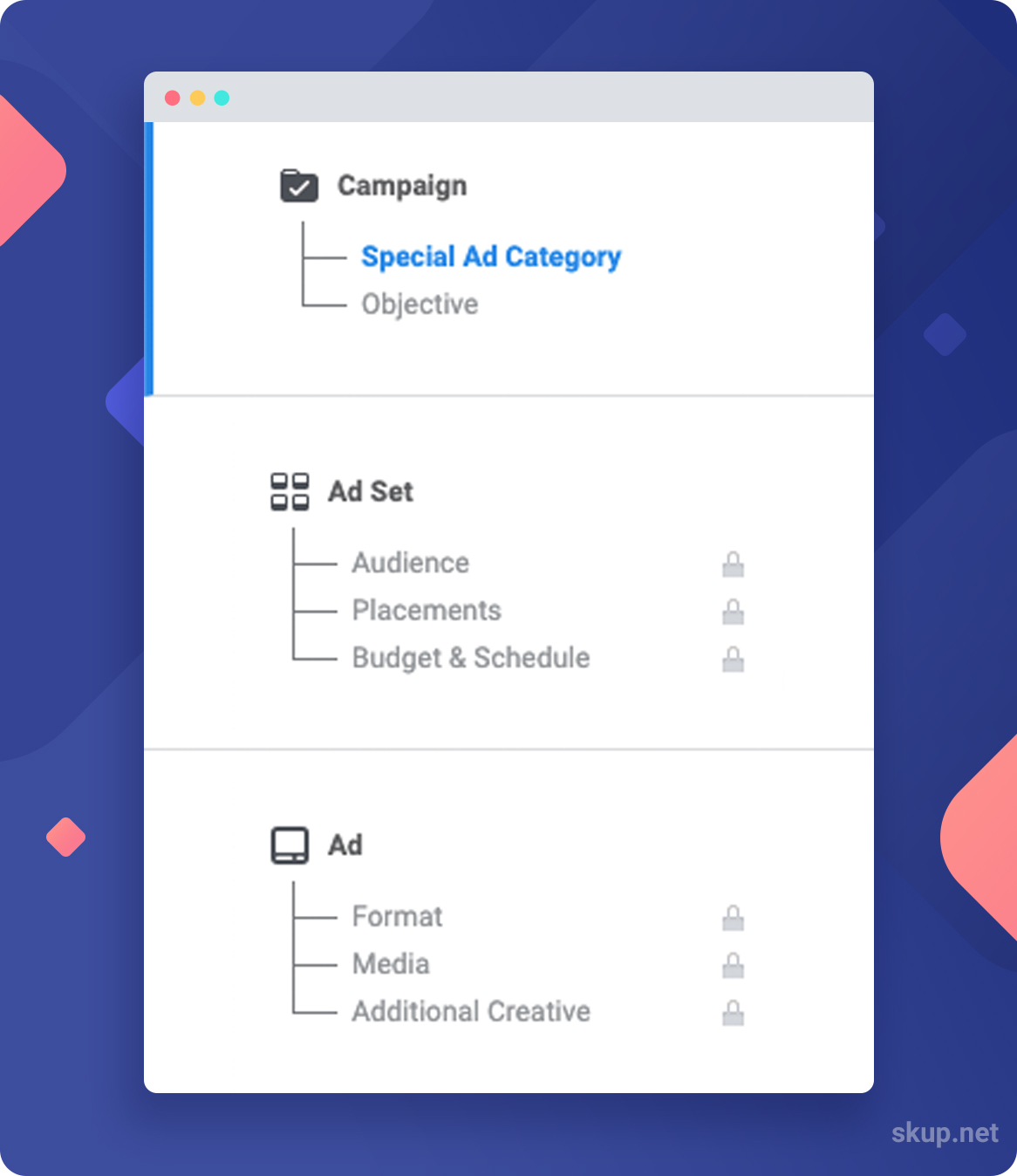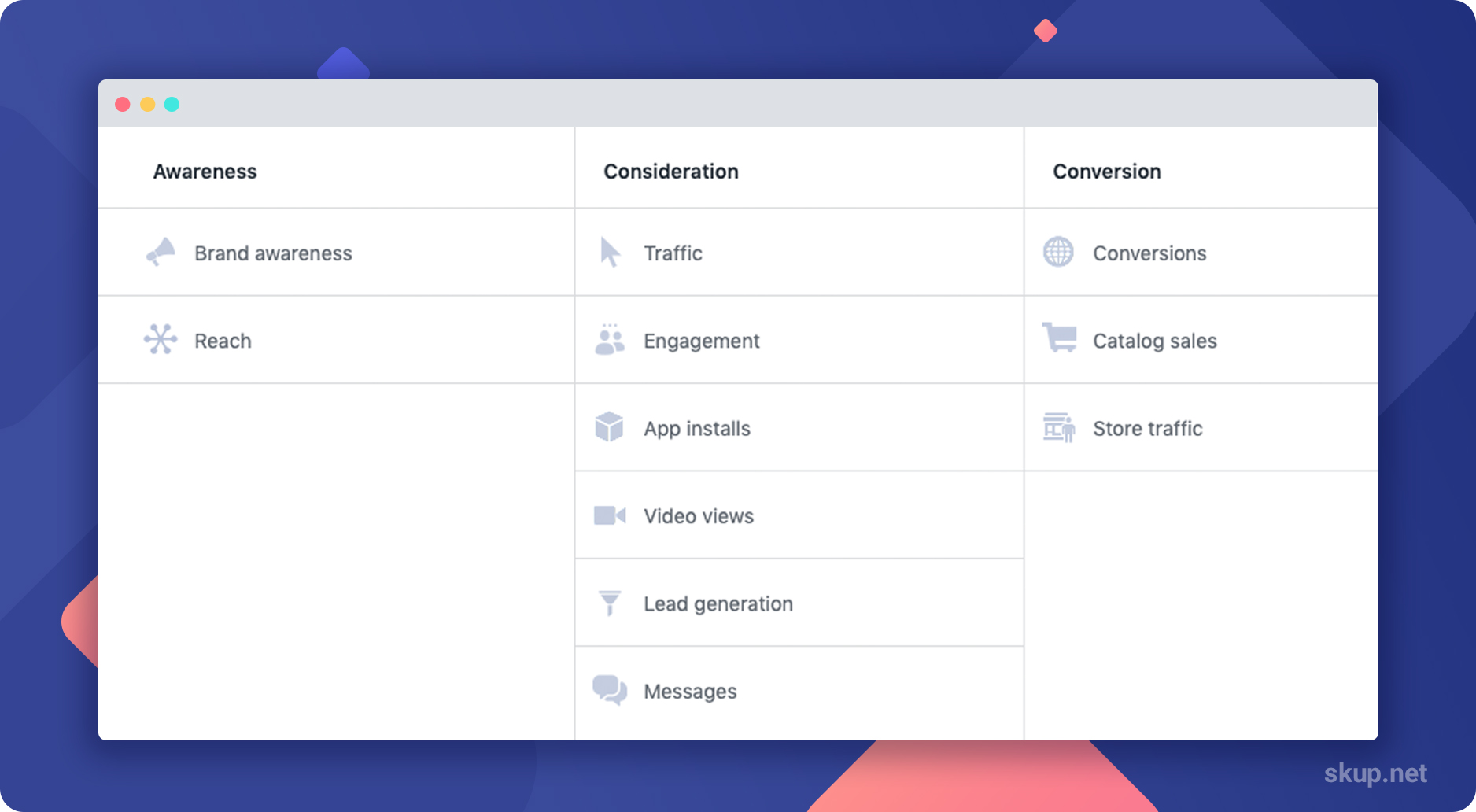If you’re one of the 2 billion Facebook users, then you know just how much advertising permeates the social platform.
But, most of us only see the tip of the iceberg when it comes to the advertising platform.
Let’s take a quick look at some facts.
Facebook has 2.2 billion total active users and almost 1.5 billion daily active users.
Those are enough eyeballs to create an audience the size of a small country…
…For almost any niche…
… In any corner of the globe.
And according to Magna, digital marketing currently accounts for a whopping 51% of all media buying in the U.S.
To put that into perspective, that makes up more market share than print, radio, and local television combined.

Based on growth projections, the percentage of total ad spend will continue to increase well into 2020 and beyond.
Right now is the perfect time to jump in and claim your stake in this digital “Gold Rush”
Why Are Facebook Ads Important?
One of the fundamental rules of advertising is to pair an offer with the perfect buyer.
And one of the fundamental benefits of advertising on Facebook is the hyper-targeted audience.
These audiences are built from embedded segmentation tools, which we’ll get into in a few chapters.
But for now, know that there’s no better way to target your audience than using Facebook ads.
A 2017 study found that 74% of Millenials and 80% of Gen Xers cited Facebook as having a huge influence on their shopping habits. In fact, 3 out of 4 consumer purchases were made based on Facebook ads.
The Anatomy Of A Facebook Ad

There are three levels to setting up your Facebook ad; the campaign, ad set, and ad levels.
And at each level you perform different tasks such as choosing the objective, setting the budget, and selecting creatives.
Let’s take a quick look at each level and cover what the requirements are for each.
The Campaign Level
This will be the first stage you encounter right after you select to create a new ad.
At this stage, you:
- Select your marketing objective
- Name your campaign
- Choose to split test
- Choose where to set the budget
Your Marketing Objectives
There are 11 Facebook ad objectives you can choose from based on your various goals.
We’ll go into much greater detail on objectives in Section 2, Chapter 2. Deciding On Your Facebook Ad Objective.
But for the intent of this chapter, just know the most common objectives relevant to you are Conversions and Catalog Sales.

Split Testing Ads
Split testing your ads can be beneficial when you’re trying to determine which part of the ad your audience best responds to.
Different combinations of headlines, copy, images, and other variables can lead to engagement or sales – split testing this will be the only way you know which performs best.
Campaign Budget Optimization
Highly recommended.
Set the budget at the campaign level to optimize your budget across the ad sets. This leads to higher returns and better spending of your budget.
The Ad Set Level
The second stage of setting up your ads is the ad set level.
Here you decide on your conversion event, audience, and placements.
Conversion Event
When selecting your conversion event, you’ll always want to choose Website conversions for purchases.
Audience
This will be further covered in Section 2 Chapter 1: Facebook Ad Targeting 101, so for now just know this is where you define who you’d like to view your ads.
Placements
You’re allowed to choose where you’d like your ads to appear.
However, I highly recommend you select Automatic Placements.
Automatic Placements work by maximizing your budget and reaching more people, which leads to a higher chance of making a sale the first day your ads run.
The Ad Level
This level contains the cosmetic aspects of your ads.
Here you get to choose which creatives (images or videos) you use, the headlines and call to actions.
We will cover more of this level in Section 2 Chapter 4: Facebook Ad Best Practices.
Facebook Ad Creatives Types, Formats, And Sizes
After deciding on your campaign objective, budget, and targeting you must choose the type of creative to use.
There’s a wide variety of options for you to use, with new types added constantly to optimize deliverability and performance.
The best thing to do is to stay up-to-date with Facebook’s definitive guide on creative requirements.
However, for the sake of saving you time, I’ve highlighted some of the requirements for popular creative types.
Photo
Size: 1,080px X1,080 px
File Type: jpg or png
Ratio: 1.91:1 to 4:5
Photo ads offer a clean, simple format to feature engaging imagery and copy. Convey who you are and what you do through high-quality images or illustrations.
Video
Size: 4GB max
File Type: MOV or MP4
Ratio: 9:16 to 16:9
Tell your story with sight, sound, and motion. Video ads come in a range of lengths and styles – short, feed-based ads for on the go or longer videos to watch on the couch.
Stories
Stories are customizable experiences that let you immerse your audience in your content. Tap into passions and inspire them to take action on mobile.
Messenger
Messenger ads start conversations. Get personal with current customers or prospects and add interactive or automated features.
Carousel
Image File Type: jpg or png
Video File Type: MOV or MP4
Size: at least 1,080px X 1,080px
Carousel ads allow you to showcase up to ten images or videos in a single ad, each with its own link. Highlight different products or tell a brand story that develops across each card.
Slideshow
Size at least 1,080px X 1,080px
File Type: jpg or png
slideshow ads are video-like ads made of motion, sound, and text. These clips can help you tell your story across devices and connection speeds.
Collection
File Type: Image or Video
Collection ads let people discover, browse, and buy what you offer. People can tap an ad to learn more about a specific product, all within a fast-loading experience.
Tying It All Together
In the previous sections, you learned how to set up and navigate your business manager, as well as the basic history of Facebook advertising.
Now you know the basic set up and anatomy of a Facebook ad, and why they’re the best option to fuel your business’s growth.
There’s just one more topic to cover in this section, What Is A Facebook Pixel And How To Install it. Once you get through that, you’ll officially be one step closer to being a Facebook ad ninja!


